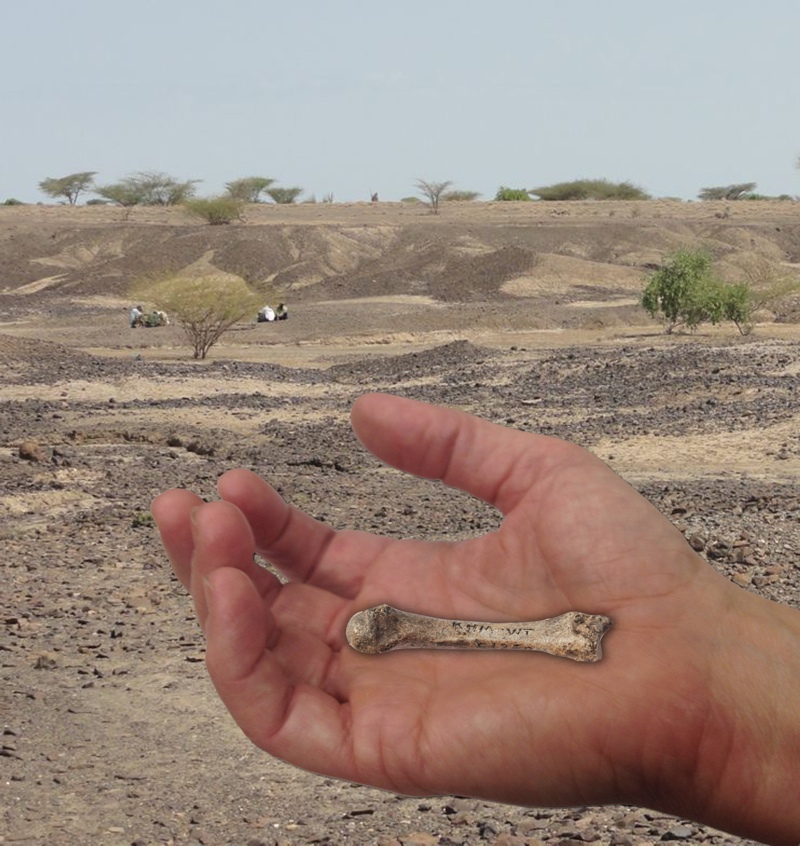Human Hand Fossil Turns Back Clock 500,000 Years on Complex Tool Use

The discovery of a 1.4-million-year-old hand-bone fossil reveals that the modern human ability to make and use complex tools may have originated far earlier than scientists previously thought, researchers say.
A critical trait that distinguishes modern humans from all other species alive today is the ability to make complex tools. It's not just the extraordinarily powerful human brain, but also the human hand, that gives humans this unique ability. In contrast, apes — humans' closest living relatives — lack a powerful and precise enough grip to create and use complex tools effectively.
A key anatomical feature of the modern human hand is the third metacarpal, a bone in the palm that connects the middle finger to the wrist.
"There's a little projection of bone in the third metacarpal known as a "styloid process" that we need for tools," said study lead author Carol Ward, an anatomist and paleoanthropologist at the University of Missouri."This tiny bit of bone in the palm of the hand helps the metacarpal lock into the wrist, helping the thumb and fingers apply greater amounts of pressure to the wrist and palm. It's part of a whole complex of features that allows us the dexterity and strength to make and use complex tools." [In Images: The Oddities of Human Anatomy]
Until now, this styloid process was found only in modern humans, Neanderthals and other archaic humans. Scientists were unsure when this bone first appeared during the course of human evolution. (The human lineage, the genus Homo, first evolved about 2.5 million years ago in Africa.)
"We had thought the modern human hand was something relatively recent, maybe something that appeared as a recent addition near the origin of our species," Ward told LiveScience.
Now, researchers have discovered a fossil almost 1.5 million years old that possesses this vital anatomical feature, meaning it existed more than 500,000 years earlier than it was previously known to have existed.
Get the world’s most fascinating discoveries delivered straight to your inbox.
"This suggests this feature might be fundamental to the origin of the genus Homo," Ward said.
The scientists discovered a third metacarpal bone in northern Kenya, west of Lake Turkana. The fossil was found near the sites where the earliest Acheulean tools — named for St. Acheul in France where tools from this culture were first discovered in 1847 — were unearthed. The Acheulean artifacts were the first known complex stone tools, rough hand axes and cleavers that first appeared some 1.8 million years ago.
"It's an arid badlands desert area now," Ward said. "There's not much vegetation to cover up fossils — there's cobble and rock everywhere, and we try and find fossils by going out and looking under all that cobble and rock on the surface."
The hand-bone fossil is about 1.42 million years old. The researchers suspect it belonged to the extinct human species Homo erectus, the earliest undisputed predecessor of modern humans.
"Back then, this area was an open woodland area much more lush than today, probably with some trees and some areas of grassland," Ward said. "The fossil was found near a winding river, which often deposits things like fossils."
By revealing the early human lineage had a modern handlike anatomy, the fossil "suggests this feature may have [been] a pre-adaptation that helped set the stage for all the technology that came later," Ward said.
Intriguingly, "at this time, in addition to early members of Homo, there were some late-surviving members of Australopithecus still around — close relatives of humans that don't seem to have this adaptation," Ward said. "This raises the question of how important our hands were in the success of our lineage and the extinction of their lineage (Australopithecus)."
The researchers now want to find older hand bones "to see when this feature evolved," Ward said. "We want to get closer to 2 million years ago to find out when this transition to modern hand anatomy took place."
Ward and her colleagues detailed their findings online Dec. 16 in the journal Proceedings of the National Academy of Sciences.
Follow us @livescience, Facebook & Google+. Original article on LiveScience.



